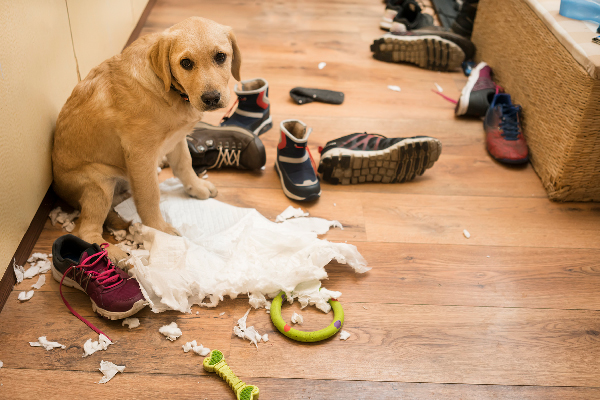
The separation anxiety could be provoked by different factors.
It’s important to realize that the destruction and house soiling that often occurs with separation anxiety is not the dog’s attempt to punish or seek revenge on his owner for leaving him alone, but is actually a panic response.
Normally they will have a big anxiety response within a short time (5-45 minutes) after their owners leave them.
They could dig, chewing and scratching at doors or windows in an attempt to escape and reunite with their owners, howling, barking and crying in an attempt to get their owner to return, urination and defecation (even with housetrained dogs) as a result of distress.
Here some advice who could help, but there is much more, and a good trainer could help to solve the problems.
- When you arrive home, ignore your dog for the first few minutes, then calmly pet him/her.
- Leave your dog with an article of clothing that smells like you, an old the shirt that you’ve slept in recently.
- Establish a “safety-cue” – a word or action that you use every time you leave that tells your dog you’ll be back. Dogs usually learn to associate certain cues with short absences by their owners. For example, when you take out the garbage, your dog knows you come right back and doesn’t become anxious. Therefore, it’s helpful to associate a safety cue with practice departures and short-duration absences.
- Practice departures must be repeated and eventually occur at different times of the day.
Some examples of safety cues are a playing radio; a playing television; a bone; or a toy (one that doesn’t have dangerous fillings and can’t be torn into pieces). Use your safety cue during practice sessions. But don’t present your dog with the safety cue when you leave for a period of time longer than he/she can tolerate. You will lose the value of the safety cue. Leaving a radio on to provide company for your dog isn’t particularly useful by itself, but a playing radio may work if you’ve used it consistently as a safety cue in your practice sessions.
If your dog engages in destructive chewing as part of his separation distress, offering him a chewing item as a safety cue is a good idea. Very hard rubber toys that can be stuffed with treats and Nylabone-like products are good choices. Remember to “roughen” the Nylabone surface for more appeal to your pet. A brief “drag” across your sidewalk or driveway will do the trick.